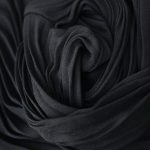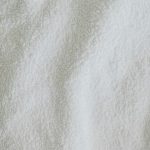When you consider car detailing, you might wonder why microfiber has become such a popular choice among enthusiasts and professionals alike. Its unique properties, like superior absorbency and scratch resistance, set it apart from traditional materials. You'll appreciate how it effectively cleans surfaces without leaving lint or scratches, but there's more to the story. As you explore the various types of microfiber products and their proper care, you'll find that their benefits extend beyond performance, raising questions about their environmental impact and best practices for use.
Table of Contents
Key Takeaways
- Microfiber's ultra-fine fibers provide superior absorbency, soaking up to seven times their weight in water for effective cleaning.
- The soft texture of microfiber prevents scratches on delicate surfaces, making it safe for car detailing.
- Microfiber products are durable and can be reused multiple times, offering better value compared to traditional materials.
- Versatile microfiber cloths and applicators are suitable for various tasks, including washing, polishing, and drying.
What Is Microfiber?
Microfiber is a synthetic material made from ultra-fine fibers that are often blended together to enhance their cleaning and absorption properties. These fibers are typically made from polyester and polyamide, creating a lightweight and durable fabric. When you use microfiber cloths or towels, you'll notice how they can pick up dirt, dust, and moisture more effectively than traditional materials.
The structure of microfiber allows it to have a large surface area, which contributes to its ability to trap particles and absorb liquids. This means you can clean your car without scratching its surface, making microfiber an ideal choice for detailing. Unlike cotton, microfiber doesn't leave lint behind, so your car's finish remains spotless.
You'll find microfiber products come in various forms, like cloths, towels, and mitts, each designed for specific tasks. Whether you're wiping down the dashboard or drying off the car after washing, using microfiber will make the job easier and more efficient.
This material is also machine washable, meaning you can reuse it multiple times without losing its effectiveness. Embracing microfiber for car detailing is an investment in quality cleaning without damaging your vehicle.
Key Benefits of Microfiber
Using microfiber for car detailing consistently delivers superior cleaning results thanks to its unique properties. This material is designed to trap dirt and dust effectively, preventing scratches and swirl marks on your vehicle's surface. Here are some key benefits that make microfiber your go-to choice for detailing:
| Benefit | Description |
|---|---|
| Highly Absorbent | Microfiber can absorb up to seven times its weight in water, making it perfect for drying. |
| Gentle on Surfaces | Its soft texture ensures that it won't scratch delicate surfaces like paint or glass. |
| Durable | Microfiber cloths can withstand multiple washes, maintaining their effectiveness over time. |
| Versatile | You can use microfiber for various tasks, from washing to polishing and drying. |
| Eco-Friendly | Using microfiber reduces the need for chemical cleaners, making it a greener option for detailing. |
Microfiber Vs. Traditional Materials
While microfiber offers numerous advantages, it's important to compare it with traditional materials to understand why it stands out in car detailing. When you consider the differences, you'll see why many detailers prefer microfiber over cotton or other fabrics.
- Absorbency: Microfiber can absorb up to seven times its weight in liquid, making it far superior to traditional materials, which often struggle with moisture retention.
- Scratch Resistance: Unlike some cotton cloths that can leave scratches or lint, microfiber is designed to be gentle on surfaces, ensuring your car's finish remains pristine.
- Durability: Microfiber towels last longer than traditional materials. They withstand multiple washes without losing their effectiveness, which translates to better value over time.
- Versatility: Microfiber can tackle a variety of tasks, from drying to polishing, while traditional materials often have limited applications, requiring you to invest in multiple products.
Different Types of Microfiber Products
When it comes to car detailing, you'll find a variety of microfiber products that can make your job easier.
From towels and cloths to applicators and pads, each type serves a specific purpose.
Understanding these options helps you choose the right tools for achieving that perfect finish.
Towels and Cloths
Microfiber towels and cloths come in various types, each designed to tackle specific car detailing tasks with efficiency. Choosing the right one for your project can make a significant difference in the results you achieve. Here are four popular types of microfiber towels and cloths you should consider:
- All-Purpose Towels: These versatile towels are perfect for general cleaning and drying. They're great for wiping down surfaces without scratching.
- Glass Towels: Specifically designed for glass surfaces, these towels have a finer weave that leaves your windows streak-free and crystal clear.
- Drying Towels: These are thicker and more absorbent, making them ideal for drying your car after a wash. They help prevent water spots and scratches.
- Buffing Towels: With a plush texture, buffing towels are excellent for removing wax or polish, giving your car that showroom shine.
Applicators and Pads
Choosing the right microfiber applicators and pads can enhance your detailing process and improve the finish on your vehicle. Microfiber applicators come in various shapes and sizes, tailored for specific tasks. For instance, round applicators are great for applying wax or sealant evenly, while flat ones work well for spreading polishes and compounds.
You'll also find different pile heights in microfiber pads. Shorter piles are ideal for polishing, providing a smooth surface that minimizes the risk of marring. On the other hand, pads with longer piles are excellent for applying wax and sealant, as they hold more product and cover larger areas efficiently.
For interior detailing, you might want to consider specialized microfiber pads designed to lift dirt and grime without scratching surfaces. These pads are soft yet effective, making them perfect for delicate areas like dashboards and leather seats.
Don't forget to check the quality of the microfiber. High-quality products feature tightly woven fibers that enhance absorption and durability. By selecting the right applicators and pads, you'll achieve a professional finish and protect your vehicle's surfaces effectively.
Proper Care for Microfiber Cloths
To keep your microfiber cloths in top condition, it's essential to wash and dry them properly after each use. With the right care, these cloths can last a long time and maintain their effectiveness in car detailing. Here's how to do it right:
- Wash Separately: Always wash microfiber cloths separately from other fabrics. This prevents lint transfer and keeps them effective for cleaning.
- Use a Gentle Detergent: Choose a mild detergent without fabric softeners or bleach. Harsh chemicals can degrade the fibers and reduce their absorbency.
- Cold Water Only: Use cold or warm water when washing. Hot water can damage the fibers, leading to a decrease in performance.
- Air Dry or Low Heat: Ideally, air dry your microfiber cloths. If you use a dryer, opt for a low heat setting to avoid melting the fibers.
Environmental Impact of Microfiber
Using microfiber cloths for car detailing has its benefits, but it's important to consider their environmental impact, especially as these materials can shed tiny fibers that contribute to pollution.
When you use microfiber, you're likely benefiting from its durability and effectiveness. However, the synthetic nature of these cloths means that they can break down over time, releasing microplastics into the environment.
These microplastics can enter waterways, affecting marine life and ecosystems. When you wash microfiber cloths, those tiny fibers often slip through wastewater treatment systems, making their way into oceans and rivers. This pollution poses a threat to aquatic organisms and can even enter the food chain, impacting human health.
Additionally, while microfiber is reusable, it's crucial to dispose of it responsibly when it reaches the end of its lifecycle. Instead of tossing it in the trash, look for recycling programs that accept synthetic materials.
Being conscious of these factors allows you to enjoy the benefits of microfiber while minimizing its environmental footprint. By making informed choices, you can help ensure that your car detailing practices aren't only effective but also environmentally friendly.
Tips for Effective Car Detailing
How can you achieve a showroom shine while detailing your car? It's all about technique and the right tools. Follow these essential tips to elevate your car detailing game:
- Start with a Clean Surface: Rinse your car thoroughly to remove dirt and debris. This prevents scratches when you start washing.
- Use Quality Microfiber Towels: Opt for microfiber towels for drying and polishing. They're gentle on your paint and absorb more water than traditional cloths.
- Detail in Sections: Work on one section at a time, whether it's the hood, doors, or wheels. This helps maintain focus and ensures you don't miss any spots.
- Apply Wax Regularly: After cleaning, apply a high-quality wax. This not only adds shine but also protects your paint from environmental damage.
Frequently Asked Questions
Can Microfiber Damage My Car's Paint or Finish?
Microfiber won't damage your car's paint or finish if you use it correctly. Just make sure you're using high-quality microfiber cloths, and avoid any dirt or debris that might scratch the surface.
How Long Do Microfiber Products Typically Last?
Microfiber products typically last between 300 to 500 washes, depending on care. If you wash and dry them correctly, you can extend their lifespan. So, treat them well, and they'll serve you longer!
Are All Microfiber Cloths the Same Quality?
Not all microfiber cloths are the same quality. You'll find variations in fiber density and weave, which affect performance. Choosing higher-quality cloths ensures better absorption, durability, and less risk of scratching surfaces during use.
Can I Use Microfiber on Delicate Surfaces?
Yes, you can use microfiber on delicate surfaces. Just make sure the microfiber cloth is soft and specifically designed for such tasks. It'll gently clean without scratching, ensuring your surfaces stay pristine and undamaged.
Is Microfiber Safe for All Car Cleaning Solutions?
Yes, microfiber's safe for most car cleaning solutions. It won't scratch surfaces and effectively traps dirt and grime. Just avoid using it with harsh chemicals that could damage the fibers, and you'll be fine!
- How Does Ring Spun Cotton Affect Garment Fit and Shape Retention? - August 13, 2024
- What Are the Challenges in Producing Ring Spun Cotton? - August 13, 2024
- Is Ring Spun Cotton Suitable for Plus-Size Clothing? - August 13, 2024






